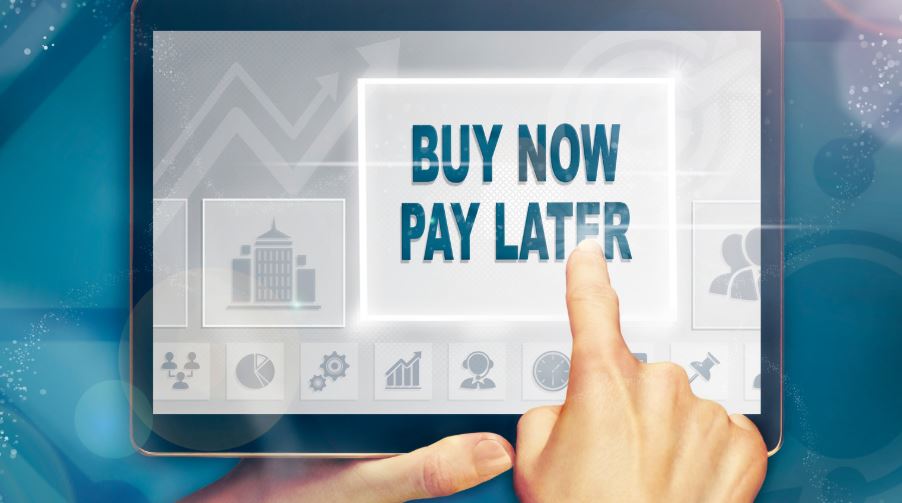Table of Contents
ToggleThe ‘Buy Now, Pay Later’ (BNPL) market has entered a new, more mature phase. The era of ‘growth at all costs’ is giving way to a focus on making a profit, using advanced technology, and adapting to a complex regulatory world.
Forecasts suggest the global sector will be worth around $560 billion in 2025. Future success will depend on managing credit risk well with AI and handling new rules like the EU’s Consumer Credit Directive.
The Evolution of the BNPL Market in 2025

BNPL services, which offer short-term financing at the point of sale so people can buy something and pay for it in instalments, have changed a lot.
Accenture notes that they have grown from a small product into an essential part of the global payments system, popular for both online and in-store transactions. The Payments 2025 & Beyond report says they have become a basic part of modern retail.
An analysis by Boston Consulting Group points out that BNPL was one of the first areas where the fintech revolution produced big, successful companies that changed what customers expect.
It’s now harder for new companies to enter the market, which is no longer an open field for start-ups but a competitive space for well-funded firms.
As Bain & Company suggests, the most likely way for new players like banks to get in is by buying other companies or forming strategic partnerships.
The main measure of success is no longer the total value of transactions. Instead, it’s the quality of the loan book and solid ‘unit economics’. A mix of economic, technological, and business trends is reshaping the entire BNPL system.
How is the Economy Affecting Customer Behaviour?
With high inflation, BNPL services have become a useful tool for people to manage their money. An analysis by Deloitte shows that they act as a buffer, protecting people’s spending power.
But a Forrester study from May 2025 pointed to a worrying trend: more people are using BNPL to pay for essentials like groceries. This is a sign of growing financial pressure on households and a change in the credit risk for providers.
Aside from the economic reasons, a big driver of BNPL’s popularity is its psychological advantage over traditional credit. The model reduces the so-called ‘pain of paying’, the discomfort people feel when spending money.
Splitting a large amount into smaller payments, combined with a simple and clear process, makes a purchase feel more affordable, especially for younger customers.
Technology as a New Area of Competition
Technology is becoming the main source of competitive advantage in the BNPL sector.
Artificial intelligence is transforming key processes in lending. According to a forecast by IDC, by the end of 2025, 33% of financial institutions will use AI in their lending operations, cutting decision times by 50%.
As Deloitte points out, real-time access to financial data through Open Banking allows for a much more accurate risk assessment and personalised offers.
The World Payments Report 2025 also notes that BNPL is being increasingly integrated with digital wallets. This gives banks a chance to protect their revenues by building flexible financing options into their existing products.
The Global BNPL Market in Numbers: Key Data and Forecasts

The BNPL market continues to grow quickly, although it is entering a more mature phase. Forecasts from Deloitte suggest that the global market will be worth around $560 billion in 2025 and will grow to $911.8 billion by the end of 2030.
New Areas for Growth: from B2B to Vertical Expansion
A key strategic direction is vertical expansion, adapting the BNPL model for specific industries like healthcare, tourism, education, and regular bill payments.
Payka, a good BNPL implementation, shows how to adapt the aforementioned model for a new segment: regular payments for household bills like energy, internet, and phone.
With this approach, deferred payments are no longer just a shopping tool but become a way to manage the household budget and cash flow.
A key part of this solution is a simplified customer verification process that uses open banking mechanisms (in line with the PSD2 directive). This allows for a quick, automated analysis of a customer’s financial situation, without losing the speed and convenience that make BNPL popular.
This shows the future direction for the market: deeper integration with customers’ everyday finances and the ability to generate stable, recurring transactions.
The Biggest Challenges for the BNPL Sector: Regulations, Risk, and Competition
Despite its promising outlook, the BNPL market faces several serious challenges that will shape its future.
An unstable regulatory environment, as noted by PwC in the case of the United States, creates uncertainty and increases compliance costs.
In Europe, a major challenge is adapting to the upcoming changes in the EU’s Consumer Credit Directive (CCD), which will cover most BNPL products and require creditworthiness checks.
The resilience of fintech lending models has not yet been fully tested through a complete credit cycle, as BCG points out. The growing number of late payments increases this risk and threatens their entire business model.
The market is also becoming more crowded. Competition from banks and tech giants like Apple will lead to a squeeze on margins and fees charged to merchants.
Although BNPL is presented as a way to increase sales, it comes with big costs for merchants. The main one is the Merchant Discount Rate (MDR), which can be a large percentage of the transaction value, unlike standard card processing fees.
For businesses in low-margin sectors, such high costs are a major barrier and require a careful balance between potential sales growth and real profit reduction.
Finally, the BNPL sector must balance financial inclusion with the risk of predatory lending to avoid accusations of unethical behaviour, especially when marketing is aimed at young consumers.
Strategies for the BNPL Market: What Banks and Fintechs Should Do?

Faced with these trends, key players need to adopt proactive strategies.
Banks should actively get involved in the BNPL market to protect their revenues and maintain relationships with younger customers. Research by Accenture shows that 40% of consumers would be more likely to use BNPL if it were offered by their main bank.
Specialist fintech players should focus on diversifying their products into areas like B2B BNPL and ‘Save Now, Pay Later’ (SNPL). They also need to increase investment in AI technology and adopt responsible lending principles.
Retailers and other merchants should see BNPL as a tool for increasing conversions, not just a payment option. It’s important for them to carefully analyse the costs and benefits, and consider integrating with several different platforms.
Summary: The Future of the BNPL Market and Strategic Takeaways
The BNPL market has moved from a phase of dynamic innovation to a stage where profitability, advanced risk management, and regulatory compliance matter most.
Over the next 3-5 years, we can expect to see further consolidation, blurring lines between banks, fintechs, and tech giants, and more harmonised regulations.
The final recommendation is clear: BNPL should be seen not as an isolated product, but as a lens through which to view key changes in consumer behaviour and technology.
It is recommended to form a cross-functional team to track new regulations, changes in technology, and the strategic moves of competitors, as well as to actively assess potential acquisition targets.




